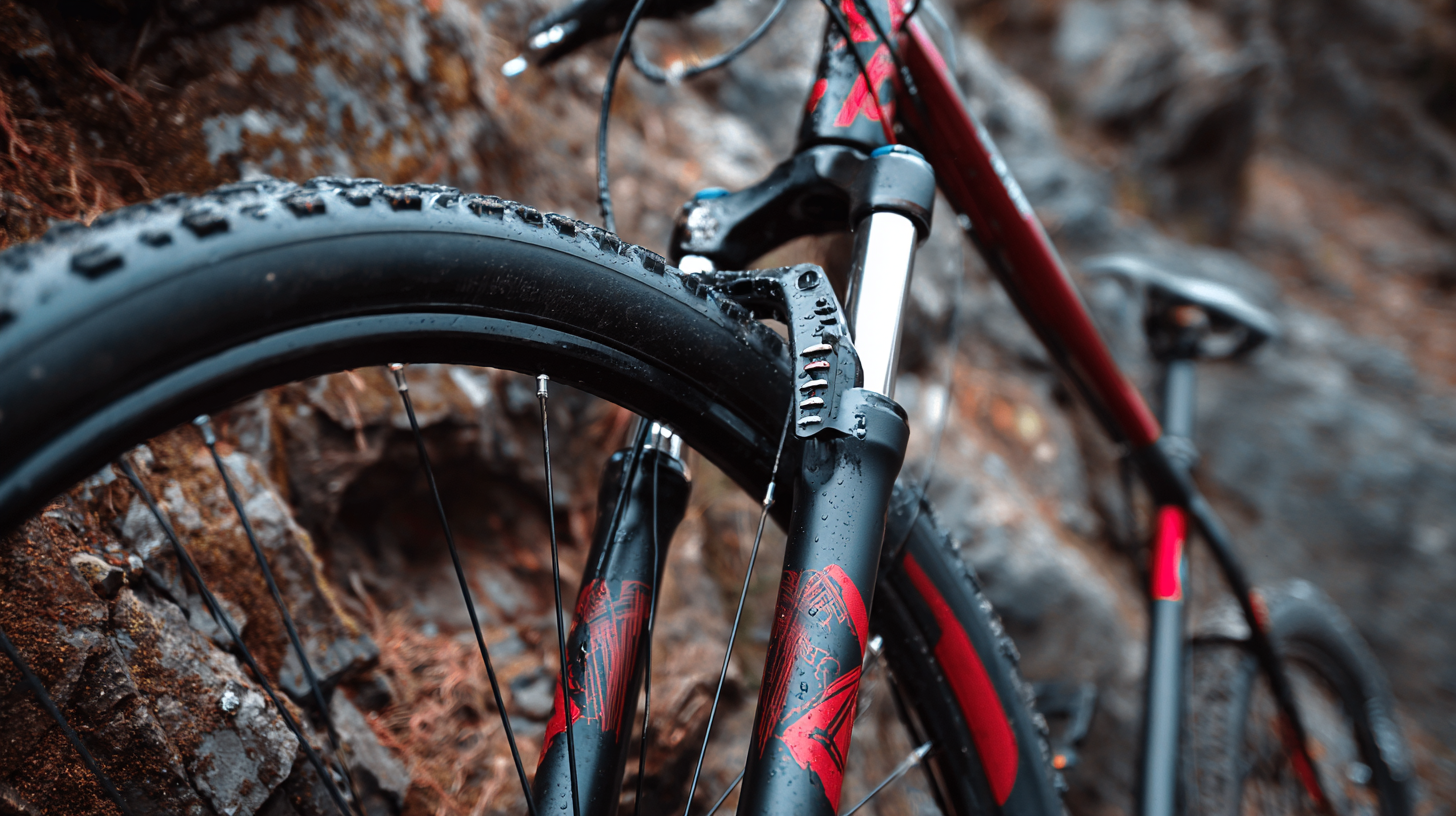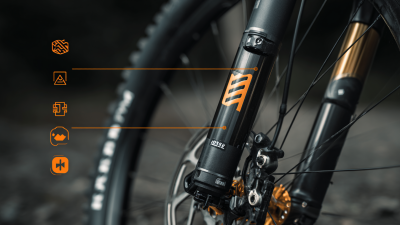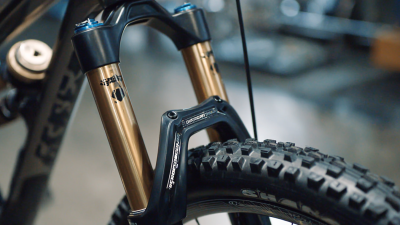Choosing the right Bicycle Fork is crucial to enhance your riding experience and optimize performance across various terrains. According to the National Bicycle Dealers Association, approximately 65% of cyclists believe that the fork significantly affects their bike’s handling and comfort. With advancements in materials and technology, modern Bicycle Forks are designed to cater to a spectrum of riding styles, whether it be road cycling, mountain biking, or commuting. A recent market analysis highlighted that lightweight, carbon-fiber forks have become increasingly popular, with a 30% growth in sales over the past five years. Understanding the implications of fork geometry, travel, and damping can profoundly influence not only the bike's weight but also the rider's efficiency and safety. As cyclists increasingly seek personalized setups, the need to select the most suitable Bicycle Fork has never been more vital.

When selecting the right bicycle fork, understanding the various types and their features is essential to match your riding style. Bicycle forks can be categorized into several main types: rigid, suspension, and combined forks.
 Rigid forks provide a lightweight and direct feel, making them ideal for road cycling and smooth paths. They offer improved power transfer and are favored by racers who prioritize speed and efficiency. However, they can compromise comfort on rough terrain.
Rigid forks provide a lightweight and direct feel, making them ideal for road cycling and smooth paths. They offer improved power transfer and are favored by racers who prioritize speed and efficiency. However, they can compromise comfort on rough terrain.
Suspension forks, on the other hand, are engineered to absorb shocks and bumps, enhancing comfort and control on off-road rides. They come in two primary styles: air and coil. Air forks are adjustable and typically lighter, suitable for cross-country riding, while coil forks provide consistent damping but add weight. Combined forks offer a blend of both worlds, featuring a rigid structure with a small amount of suspension for versatility. Your riding style—be it racing, touring, or mountain biking—will guide your choice of fork, ensuring you select one that enhances your overall experience on the bike.
Selecting the right bicycle fork for your riding style begins with a clear understanding of the type of terrain you plan to tackle. Riders typically fall into three main categories: road, mountain, and hybrid. According to a report by the National Bicycle Dealers Association, around 40% of cyclists prefer road biking, which emphasizes speed and efficiency on paved surfaces. For these riders, a lightweight, rigid fork is essential to maintain aerodynamics and reduce drag, often made from materials like carbon fiber or aluminum.
In contrast, mountain bikers, representing approximately 25% of the cycling community, require a more robust and often suspension-equipped fork. A study published in the Journal of Sport Sciences highlights that proper suspension can improve comfort and control on rough trails by up to 30%. Riders in this category should look for forks that offer adjustable travel to accommodate various terrains and riding preferences, ensuring they can handle the challenges of steep descents and rocky paths.
Finally, hybrid cyclists, making up around 35% of the market, benefit from versatility in their choice of fork. These riders often encounter both smooth pavement and light off-road conditions. Research by Cycling Weekly suggests that a balanced fork, offering some level of suspension without excessive weight, can enhance performance across different surfaces. Selecting the right fork tailored to each riding style not only improves overall riding experience but also enhances safety and efficiency.
When selecting a bicycle fork, the choice of material is paramount and can significantly affect your riding experience. The primary materials available—carbon, aluminum, and steel—each bring unique characteristics to the table. Carbon fiber is known for its lightweight and superior shock absorption, making it an ideal choice for performance-oriented riders. In contrast, aluminum offers an excellent balance of weight, durability, and cost-effectiveness, catering to a broad range of cycling enthusiasts. Steel, while heavier, is celebrated for its strength and comfort, particularly on rough terrains.
As technological advancements continue to forge new paths in the manufacturing landscape, the bike industry is witnessing a shift towards sustainability and green manufacturing practices. In recent years, the market for low-carbon steel, which reached a valuation of $11 billion in 2022, is projected to grow to $15 billion by 2030. This growth is fueled by increasing consumer awareness and demands for environmentally responsible products. With automation and innovative production methods gaining traction, manufacturers are better equipped to meet these evolving market needs while maintaining quality and performance in bicycle components.
When selecting a bicycle fork, it's essential to understand how fork geometry significantly impacts handling and comfort. The geometry of the fork, including aspects like offset, rake, and axle-to-crown length, greatly influences how a bike responds to steering inputs. For instance, a fork with a longer offset may enhance stability at higher speeds, making it more suited for long-distance rides or gravel cycling where swift adjustments are not critical. Conversely, a shorter offset can increase responsiveness, making it ideal for technical trails where agility is paramount.

Different riding styles call for specific geometric features to optimize performance. For example, gravel bikes benefit from unique fork designs that cater to varied terrains, providing comfort and confidence when navigating rough surfaces. The interplay between wheelbase, stem length, and fork geometry determines how well a bicycle handles technical descents or bumpy trails. As you assess potential forks, consider how these geometric elements will align with your riding preferences, ensuring a tailored experience that enhances both comfort and control on any adventure.
When selecting the right bicycle fork, compatibility and fit are essential factors to consider.
The fork must match your bike frame's specifications, including the steerer tube diameter, axle type, and overall geometry. Frame geometry plays a crucial role in your bike’s performance, influencing handling and stability. A mismatch can lead to unsafe riding conditions or excessive wear on components. Therefore, always refer to the manufacturer’s guidelines regarding fork compatibility before making a purchase.
Additionally, wheel size is another vital aspect to keep in mind. Forks are designed to accommodate specific wheel diameters, such as 26", 27.5", or 29". Choosing a fork that matches your wheel size ensures proper alignment and functionality. Furthermore, consider the brake system you’re using—whether disk or rim brakes—since this will affect your choice of fork as well. By confirming these compatibility factors, you can make a more informed decision, enhancing both your riding experience and the performance of your bicycle.






